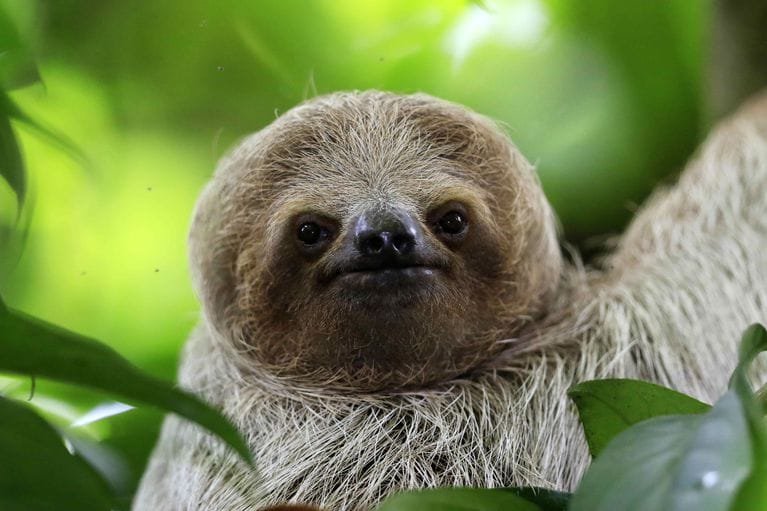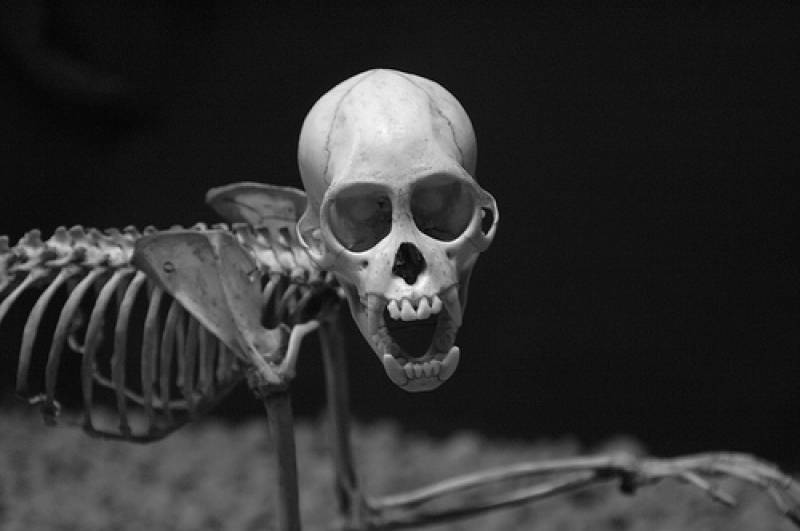Sloths seem to be everyone’s “spirit animal.” They get to eat, sleep, and hang out in trees all day, going about their business without a care in the world. Or at least that’s how it looks. As it turns out, there are plenty of good reasons why sloths are so sluggish—and laziness isn’t one of them. Here are 10 amazing facts about the sloth.
1. What are sloths?
There are actually six species of sloths. They came in two varieties:
- Two-toed
- Three-toed
Now, this can be a little confusing because both types have three claws on their hind limbs.
Technically, two-toed sloths should be really called two-fingered sloths because the difference is only their front limbs.
And those claws, they get pretty long and can grow to about three to four inches, which makes walking on the ground pretty difficult.
But evolution took care of that because sloths spend most of their time in trees.
2. They like warm places
Thousands of years ago, sloths roamed North America. But today they can be found in South and Central America.
They like to hang out in tall trees mostly in the rainforests, cloud forests, or mangroves.
In fact, the three-toed species have been found to spend their entire life in the tree that they were born in.
3. Slow, slower, slowest
Sloths are considered the slowest-moving animals on the planet. They crawl only about one foot per minute. But while they’re slow climbers, they’re quite speedy in water.
They’re naturally buoyant and can actually do the breast stroke like humans. That is really just another great evolutionary adaptation because rainforests are prone to seasonal flooding. So swimming is essential for their survival.
Swimming also helps them get to new places much faster, which is great when they’re searching for a mate.
4. Mating
Sloths mate and give birth in trees. But in the wild they are solitary animals, so first they need to find each other.
Females climb down from the tree, which takes a while, and poop at the base of it. That’s how they leave their scents, in case you were wondering.
They also let out a shrill, monotone mating scream to let the males in the area know she’s ready. The males then start the slow race of getting to her.
If more than one male makes it there at the same time, they fight each other, violently swiping their claws at each other while upside down from tree branches.
Once the deed is done, successful gestation takes about five to six months for the pale-throated sloth and as much as 11.5 months for the Hoffmann’s two-toed sloth. All sloth mommies only give birth to one baby at a time.
5. They eat a lot of leaves
Living in trees, sloths obviously eat a lot of foliage, but only the three-toed sloths are herbivores.
Two-toed sloths are omnivorous, which means that they also eat bugs, small lizards, as well fruit and leaves. But all the leaves that they eat are really hard to digest, that’s why sloths have multi-chambered stomachs filled with bacteria that can break down the cellulose.
The leafy diet also doesn’t provide a lot of nutrition, which may account for their sluggish lifestyle since they don’t get a lot of energy from it.
6. Pooping
Sloths are well-known for the great trek that they take down from the tree. They do it once a week just to poop. And they’re never constipated. They simply just take that long to digest the food.
It takes an average human about 12 to 48 hours to ingest, digest, and eliminate waste from food. But it can take up to a month for a sloth to digest a single meal.
When sloths eliminate, they can loose about a third of their body weight.
7. They have one extra thing no other mammal has
Sloths have specialized anatomy that allows them to hang upside down. It’s like gravity doesn’t exist for them.
Imagine a highly trained gymnast doing a handstand for many hours. After a while, they’re gonna begin to shake and quiver or feel out of breath. But sloths are able to eat, mate, and give birth all while upside down.
And all of that without the weight of their internal organs pressing on their diaphragm and affecting their breathing.
Well, researchers have found that a sloth’s internal organs are actually anchored on the abdomen. That means that they keep the weight away from their diaphragm. Typically, mammals only have seven cervical vertebrae.
Biologists aren’t sure how they got this extra feature. Usually, when this happens in the animal kingdom, it results in a stillbirth, but the slow metabolism of the sloth may have made it less risky to have a higher number of vertebrae.
One cool feature of this is that the three-toed sloth can turn their heads up to an astonishing 270 degrees.
8. Their fungi could possibly cure cancer
Since sloths spend so much time in trees, their lush coat becomes covered in algae in the wild. This is great because it offers them protection from harpy eagles and other predators since they’re camouflaged.
Scientists have found that a range of fungi grow and thrive on their fur. But even more amazingly, they found that these fungi actually showed positive effects in battling human breast cancer strains.
9. Their slowness is their defense mechanism
Generally being fast and swift in the animal kingdom is a good thing because for a predator it’s much easier to catch your prey.
However, sloths have gone in the opposite direction in terms of their evolution.
Their strategy is invisibility, laying as still as possible and moving very slowly deep in the cover of trees so that no one can spot them.



